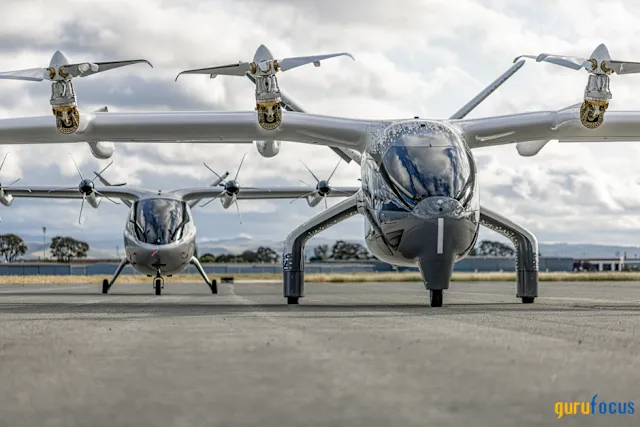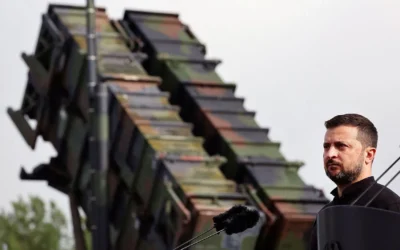Archer Aviation: Preparing for Take-Off as it Eyes FAA Approval and Commercial Launch
As the world emerges from the pandemic and travelers begin to seek new methods of transportation, the air mobility sector finds itself at a unique intersection of opportunity and skepticism. One player in this blossoming field is Archer Aviation (ACHR), a company pursuing the vision of urban air mobility. With a focus on electric vertical take-off and landing (eVTOL) aircraft, Archer is ramping up production and preparing for FAA approval, all while aiming for a commercial launch in 2025.
The Context of Urban Air Mobility
Urban air mobility has been touted as a revolutionary alternative to ground transportation, projected to alleviate traffic congestion and reduce carbon emissions. Major cities are often choked with traffic, leading to frustration for commuters, and solutions seem few and far between. Enter eVTOL aircraft, which promise to ferry passengers over cityscapes in a manner that could redefine air travel. Archer Aviation’s approach is to provide accessible, on-demand air transportation, shifting the paradigm of how we think about commuting.
Archer’s Road to FAA Approval
The road to certification by the Federal Aviation Administration (FAA) is critical for Archer Aviation, as it is for any company in the aerospace industry. The FAA aims to ensure that any new aircraft designs not only meet aviation safety standards but are also approved for commercial use. Archer’s flagship aircraft, referred to as the “Maker,” is currently in the testing phase, a crucial milestone before the FAA can bestow its blessings.
In recent updates, Archer has assured investors that it is on track with its certification roadmap, a key element demonstrating that it can meet strict regulatory requirements. This progress is vital for investor confidence, particularly in industries characterized by significant R&D costs and extended timelines for profitability.
Production Ramp-Up
In tandem with its pursuit of FAA approval, Archer is ramping up production efforts. The company’s strategy centers around vertical integration, allowing it to control various aspects of its manufacturing processes. This includes assembling the batteries, which are the backbone of its eVTOL operations, in-house to ensure quality and reliability.
Archer recently announced plans to build a manufacturing facility in Georgia, aimed at streamlining the production of its eVTOL aircraft. This move indicates a serious commitment to entering the market with not just one or two models but potentially a range of aircraft tailored to meet various urban transportation needs. As production intensifies, analysts are closely watching how Archer balances the challenges of scaling operations while ensuring quality and safety compliance with FAA regulations.
The 2025 Commercial Launch
The objective of launching commercial services by 2025 is ambitious, but not unattainable, provided that required certifications and production milestones are met. Archer is not alone in this race; several other companies are also vying for dominance in the urban air mobility space. This competitive landscape means that Archer must distinguish itself through superior technology, compelling pricing strategies, and a robust operational framework.
Marketing the service successfully will also be pivotal to garnering public interest. As with any new transport modality, public perception will play a significant role in its acceptance. At this price point, eVTOL services must provide clear and tangible benefits to both private and commercial customers.
Financial Landscape and the Business Model
Archer’s success will not only depend on technological prowess; it must also execute a viable business model that can sustain operations and grow profits. Its projected revenue streams include both passenger fares and potential partnerships with ride-hailing services that can use its air taxis to enrich their mobility options.
Investors have expressed both enthusiasm and concern regarding Archer’s financials as the company continues on its path. As of late 2023, Archer’s stock price has fluctuated significantly, reflecting broader market sentiment towards the aviation sector and speculative technology ventures. Some analysts project that the demand for urban air mobility could soar in the years to come, while others remain skeptical about the costs and regulatory hurdles yet to be overcome.
A Competitive Environment
Archer’s journey is underscored by a strong competitive environment, with companies like Joby Aviation, Lift Aircraft, and Volocopter also making strides in the eVTOL space. Each entity seeks to innovate and capture its share of a potentially lucrative market, turning urban air transportation into a reality. As these companies vie for the top position, they will need to adapt their strategies to tackle both technological and regulatory challenges.
The business model fast emerging around urban air mobility ties in closely with the immerging eco-conscious mentality. Interest has surged in sustainable practices, driven by consumers and government policy alike. Companies effectively incorporating sustainable design, emissions regulations, and environmentally-friendly practices are more likely to succeed where traditional aviation may struggle.
Public Perception and Acceptance
As eVTOL flights aim to enter the skies, public acceptance will be paramount. Commuters will likely hesitate before choosing to hop an air taxi, especially in the early days of operation. Ensuring passenger safety, minimizing noise pollution, and making the service affordable will all play critical roles in assuaging public apprehension.
Community outreach, education campaigns, and targeted marketing will be necessary tools to familiarize the public with the benefits and features of eVTOL. This will be crucial for providing a pathway for people to understand how such transportation can benefit their daily lives and relieve congestion in a meaningful way.
The Road Ahead
As Archer Aviation moves towards its goal of FAA approval and a commercial launch by 2025, it appears poised between opportunity and challenges. Environmental consideration, innovative design, and dedicated sector investment point toward an inspiring future for urban air mobility.
However, success isn’t certain, and any number of hiccups could disrupt plans. Achieving FAA certification, meeting production requirements, and winning public acceptance will be just as important as developing cutting-edge technology.
The upcoming months and years will clarify whether Archer can soar beyond its competitors and fulfill its mission of transforming urban transportation. Advancements in air mobility could very well redefine our cities, and whether Archer Aviation is at the forefront of this revolution remains to be seen.
Conclusion
In the evolving landscape of aviation, Archer Aviation stands as a beacon of promise and ambition within the urban air mobility niche. Every milestone achieved and challenge met can potentially pave the way for a new era of transportation. As it prepares for a commercially viable future, stakeholders, investors, and potential customers are watching closely—hoping to witness a successful take-off towards a future where the skies are beckoned as highways of the future.







